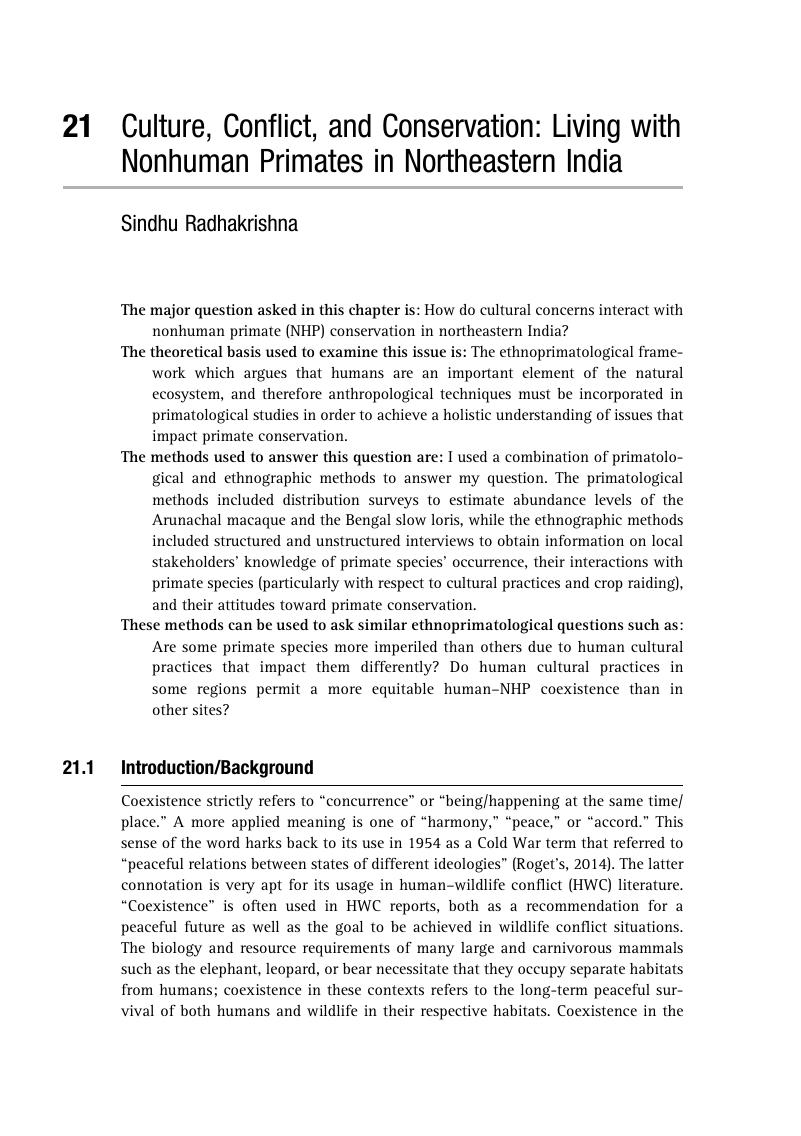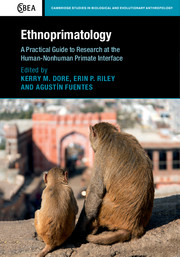Book contents
- EthnoprimatologyA Practical Guide to Research at the Human–Nonhuman Primate Interface
- Cambridge Studies in Biological and Evolutionary Anthropology
- Ethnoprimatology
- Copyright page
- Contents
- Contributors
- Methods
- 1 Introduction: Doing Ethnoprimatology in the Anthropocene
- Part I Characterizing the Interface
- Part II Following the Data: Incorporating Ethnography
- Part III Implications for Conservation
- 19 Introduction to Part III
- 20 Using a Mixed-Methods Approach to Elucidate the Conservation Implications of the Human–Primate Interface in Fanjingshan National Nature Reserve, China
- 21 Culture, Conflict, and Conservation: Living with Nonhuman Primates in Northeastern India
- 22 The Conservation Implications of Seasonal Endangered Lemur Hunting
- 23 Ethnoprimatology Matters: Integration, Innovation, and Intellectual Generosity
- Index
- References
21 - Culture, Conflict, and Conservation: Living with Nonhuman Primates in Northeastern India
from Part III - Implications for Conservation
Published online by Cambridge University Press: 16 February 2017
- EthnoprimatologyA Practical Guide to Research at the Human–Nonhuman Primate Interface
- Cambridge Studies in Biological and Evolutionary Anthropology
- Ethnoprimatology
- Copyright page
- Contents
- Contributors
- Methods
- 1 Introduction: Doing Ethnoprimatology in the Anthropocene
- Part I Characterizing the Interface
- Part II Following the Data: Incorporating Ethnography
- Part III Implications for Conservation
- 19 Introduction to Part III
- 20 Using a Mixed-Methods Approach to Elucidate the Conservation Implications of the Human–Primate Interface in Fanjingshan National Nature Reserve, China
- 21 Culture, Conflict, and Conservation: Living with Nonhuman Primates in Northeastern India
- 22 The Conservation Implications of Seasonal Endangered Lemur Hunting
- 23 Ethnoprimatology Matters: Integration, Innovation, and Intellectual Generosity
- Index
- References
Summary

- Type
- Chapter
- Information
- EthnoprimatologyA Practical Guide to Research at the Human-Nonhuman Primate Interface, pp. 271 - 283Publisher: Cambridge University PressPrint publication year: 2017
References
- 1
- Cited by



